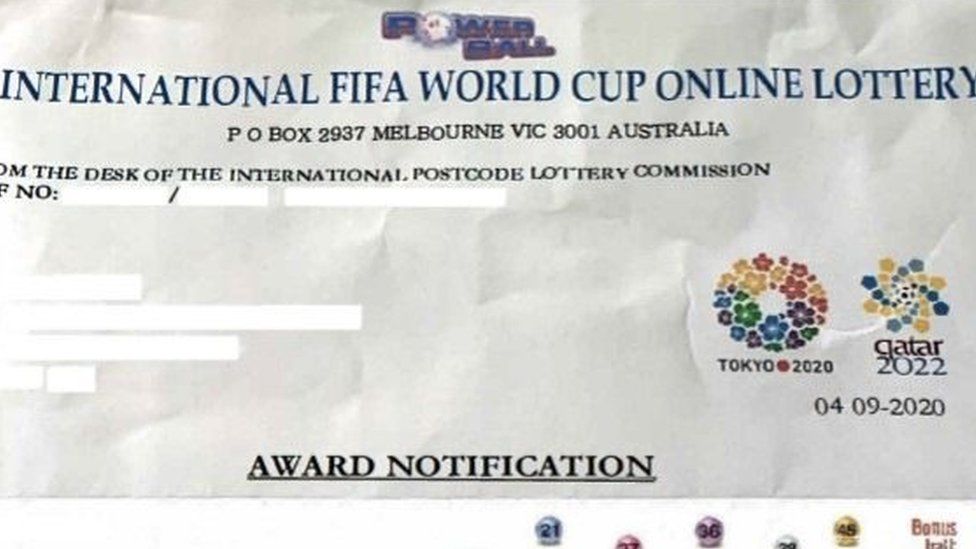ARTICLE AD BOX
 Image source, National Trading Standards
Image source, National Trading Standards
An example of a World Cup lottery letter
By Kevin Peachey
Cost of living correspondent
Fraudsters are exploiting interest in the football World Cup to trick people into replying to scam lottery letters.
These mailshots incorrectly claim to be affiliated to the event, include official logos, and ask recipients for money to claim a "huge" cash prize. Such rewards are never seen.
National Trading Standards said a surge in letters had coincided with previous major tournaments.
Officers said they wanted the public's help to gather information about scams.
They want people to send any scam mail they receive to trading standards over the next month, calling the campaign a Scamnesty.
"By building a fuller picture of the scams out there, we can stay a step ahead of the criminals," said Louise Baxter, head of the National Trading Standards Scams Team.
"And as well as sending in their own scam mail, I'd encourage people to talk about Scamnesty with older friends and relatives. They are likely to be at the sharp end of the mailings so the intelligence they can provide is crucial."
Scam mail can be sent free of charge to: NTSST, FREEPOST, MAIL MARSHALS.
International organised crime gangs are often behind these kind of scams, adapting them to take advantage of a hot topic of the time.
At present, trading standards officers expect con-artists to use interest in the football World Cup in Qatar, with examples including letters falsely claiming that a lottery has been organised to promote the tournament.
The wording may vary but the aim of the fraudsters is always to trick vulnerable people into sending money. The average amount requested this year in postal scams is £48, usually in cash, officers said. If people responded, they would then be repeatedly targeted and many victims have lost thousands of pounds.
So far this year, more than 80% of postal scam examples seen by officers have been clairvoyant scams, where recipients are promised more detailed readings if they send money.
Other postal scams regularly seen include fake bogus health cures and investment scams.
Image source, Getty Images
John Herriman, chief executive at the Chartered Trading Standards Institute (CTSI), said: "Trading Standards professionals witness the devastating effects of scam mail day in and day out. The criminals behind these letters prey on the most vulnerable in our society, and at this time of year those that feel isolated and lonely are more inclined to respond to scam mail arriving out of the blue.
"Our lead officers have witnessed horrific cases whereby victims have lost over £100,000 to scam mail. It is a terrible cycle that some find it hard to get out of as the scammers often befriend their victims to build a level of trust."
However, home visits by officers have managed to prevent some vulnerable people falling victim to scams, and some money has been returned.
Earlier this year, it was announced that 3,500 UK victims of an international scam were to be refunded a share of £530,000 after a landmark case and four years of investigation.
Fraudsters in the US tricked elderly and sick people into paying upfront fees for guaranteed cash prizes that were never paid.
How to spot a scam letter
- Scam mail is often personalised using the recipient's name throughout the letter, as well as on images such as certificates and cheques
- Artwork uses seals or crest and fonts that suggest they come from a financial institution or official body
- Words like "guaranteed" or "100% genuine" are used and precise amounts of money are described
- Signatures claim to be from officials with senior ranking titles and identification numbers
- They outline a sense of urgency, such as "reply within seven days" or "before the deadline"
More details of how to recognise a scam and where to send examples are outlined on the Friends Against Scams website, run by National Trading Standards.

 2 years ago
35
2 years ago
35








 English (US) ·
English (US) ·